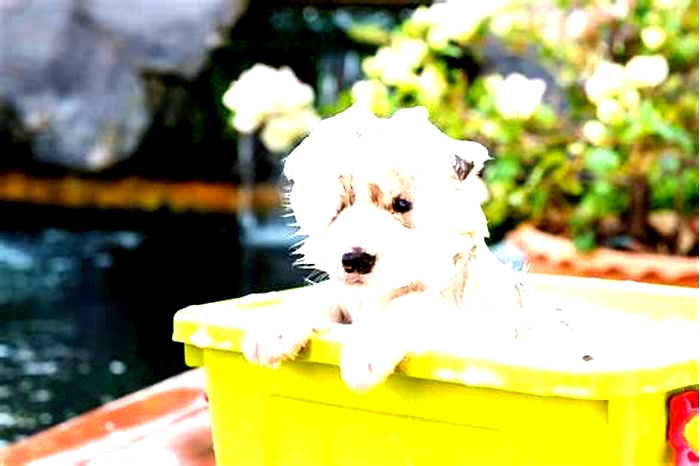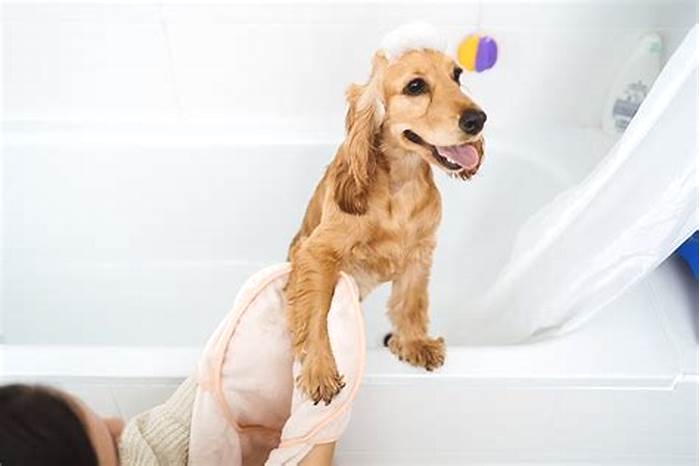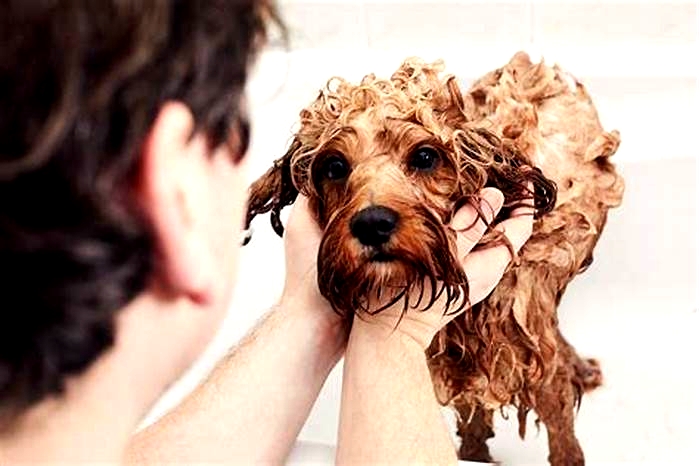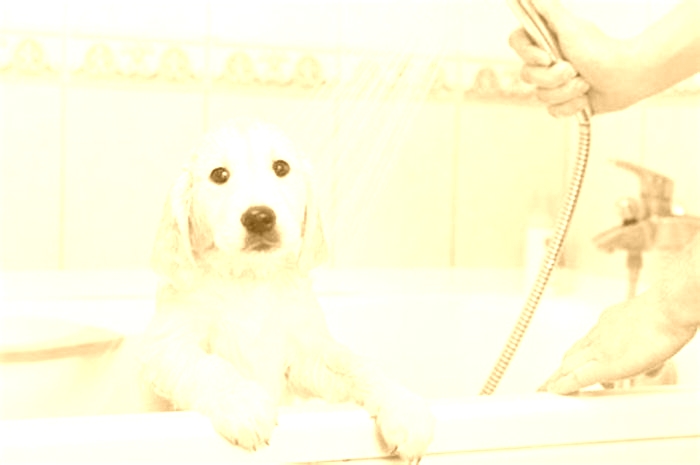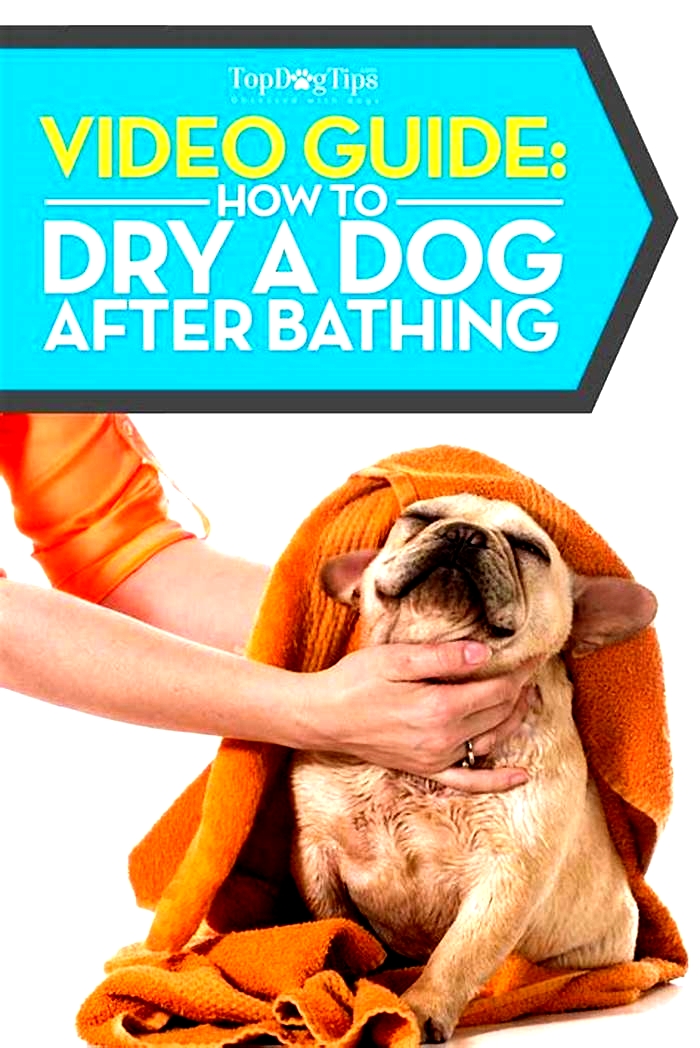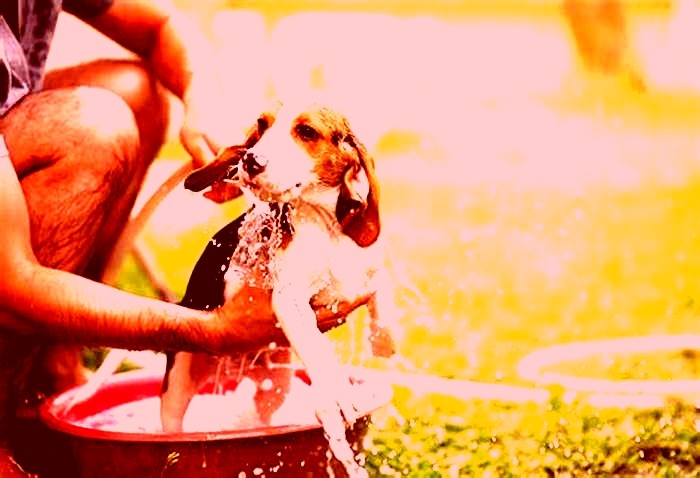Can I give my dog a bath after eating
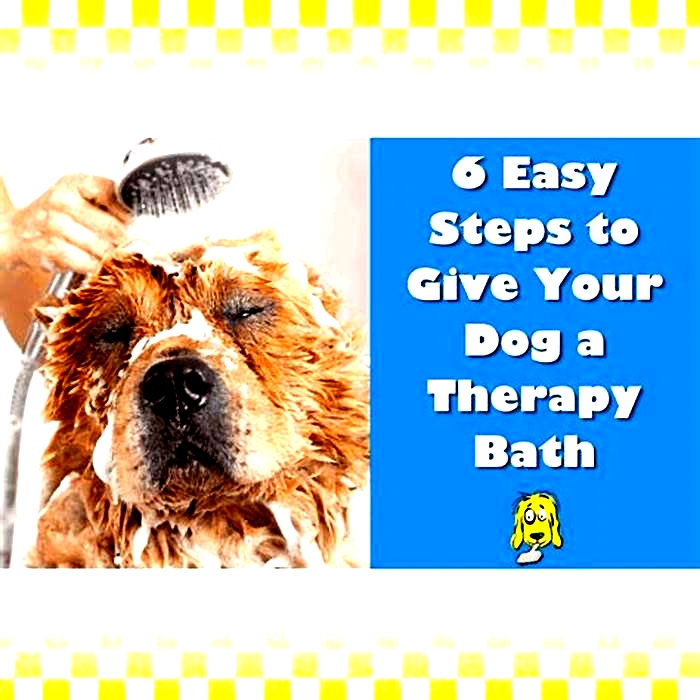
Can You Bathe Your Dog After Eating
After your dog has eaten their meal, it is recommended to wait at least two hours before exercising or bathing them. Many dogs dont like having a bath and can get anxious or upset when shampoo time comes around. Also, allowing their meal to settle reduces the risk of vomiting or diarrhea.
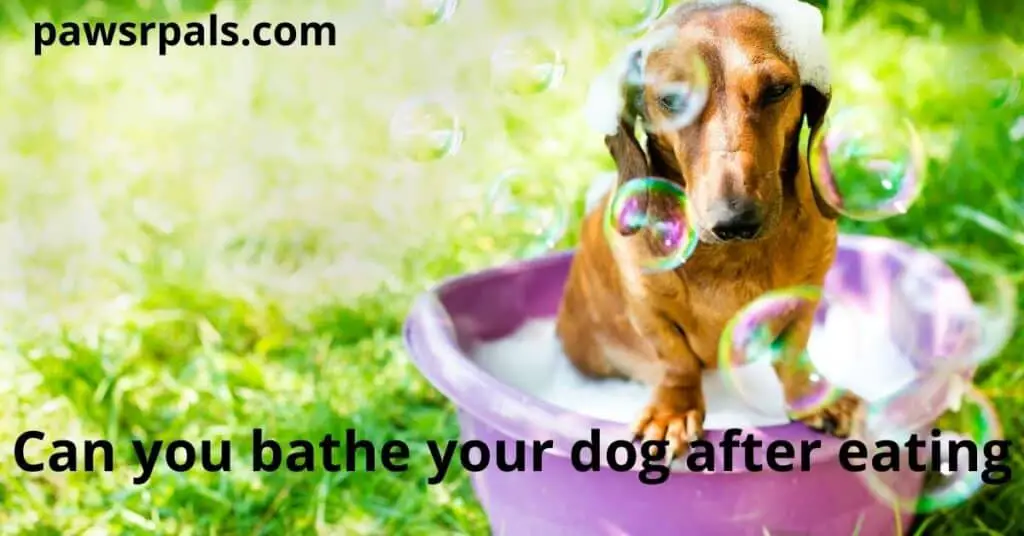
Even if your dog does enjoy bathtime, allowing a couple of hours to pass after eating reduces the risk of gastrointestinal problems, such as gastric torsion.
Gastric torsion is when the stomach is full and bloated and cannot return to normal size. As a result, the stomach can twist and cause internal blockages. This is more common in larger breeds but can occur in any size dog. Gastric torsion can be severe as it doesnt just affect the digestive system. It also puts pressure on other organs and blood vessels. It can lead to death if left untreated.
Dogs are opportunistic carnivores, and their digestive systems can take anywhere from 8 to 12 hours to digest food. Dogs digestive systems are slower than humans, who usually take 4 to 5 hours to digest. Larger dogs have a slower digestive system than smaller dogs. Different types of food are easier to digest than others. Wet food digests quicker than dry food. Bones can take a couple of days to digest.
Many factors will also affect your dogs digestive system and metabolic rate:
- Age of the dog, metabolism slows as they get older.
- Lifestyle, an active dog will have a higher metabolism than a sedentary dog.
- Pre-existing medical condition.
- Pre-existing digestive problems.
When should I bathe my dog
Unlike humans, dogs dont need to bathe daily. However, several factors will affect when you should wash your dog.
Environment
Does your dog get walked in mucky terrains like the woods or fields? Does your beloved pooch like to roll in omg, what is that! It stinks? Do they like to swim in lakes, big muddy puddles, and horrible green ponds? If the answer to these is yes, your furry friend will probably need a bath reasonably regularly.
Whenever my girl went for a swim in the sea, I would hose off the salt and sand from her. But, of course, I wouldnt bathe her every time since shes a Husky.
If your dog just gets walked in a park or around town and they dont get too dirty. A bath wont be necessary too often. Instead, they may require their paws wiped.
Breed
It will also depend on your dogs breed. Some breeds, like the Husky, should only be washed a few times a year, as they have sensitive skin, and over-bathing can ruin their natural oils, which keep their coats in good condition. In contrast, breeds with oily skin and wrinkles will need to be bathed every 4 to 6 weeks to help keep their skin and coats clean. But, again, your vet or groomer will be able to advise you on how often your dog should be bathed.
Medical Conditions
Some dog breeds are more prone to skin problems and may require medicated shampoos to be used regularly. In addition, wrinkly dogs need thorough cleaning daily and baths more frequently than other breeds. Your vet will be able to advise you on what to use and how often to bathe your dog.
However, as a general rule, you should bathe your dog at least 2 hours after eating and only when they need a bath. Your nose will tell you when that is!
What do I need to bathe my dog
Equipment for bathing your dog is relatively simple and will depend on whether you have a small dog or a large dog. If you have a small dog, it can usually fit comfortably into your sink. If you have a large dog that fits in your bath or shower, you can use that.
The only thing to note is the shampoo and conditioner. Use only products that are specifically for dogs. Human shampoo and conditioner are not suitable for your dogs. Dogs have more sensitive skin than us, and human products will irritate, even baby shampoos.
A shower hose with a showerhead lets you wet the fur and rinse the products out of their coat much more manageably. You can also buy a brush to allow you to work the shampoo into the hair to remove the dirt.
You will need towels. Quite a few towels. There are a couple of towels on the floor, at least one to lay across the dogs back, and possibly one for you.
You can also buy dog baths, either heavy-duty plastic or collapsible ones, which can be put away easily. These can be used either inside or outside if the weather is nice.
Having another pair of hands available can also be helpful if your pup doesnt like bathtime. Bathing my dog is a 2-man job!
What steps should I take bathing my dog
It is good to have everything ready for bathtime that you will need. The last thing you want is to be trying to find shampoo or towels while you try to keep your dog in the bath or tub. Instead, you want a towel to hand to cover the dog before they shake the water from them all over you!
Since not all dogs enjoy bathtime, having some routine steps can help make it a more positive experience for your furry friend.
- Take your furry friend for a walk. It is easier to work with a pet who has got rid of some excess energy, but you dont want them to be too tired.
- Brush your dog before their bath. This reduces matting and tangling during washing.
- The water temperature should be lukewarm. Test this on your arm.
- Try reducing the shower noise for your dog. Dogs have sensitive ears. The noise of the shower hitting the bottom of the bath can be upsetting. Add some water to the tub to reduce the noise. Additionally, putting some cotton balls in your dogs ears can reduce the noise.
- Allow the shower water to hit your hand first and let the water run from your hand. Your dog is used to your touch and may find the shower spray too harsh. Do not spray the water directly onto your dogs face. Instead, wipe their face with a damp flannel or damp cotton ball.
- Once your dog is completely wet, apply the shampoo, start at the paws and work your way up. Make sure you massage the suds well into your dogs fur. A shampoo brush can be used to loosen the dirt from the hair if you prefer.
- Its time to rinse all those suds off. Start at the top this time and work your way down. Again, do not spray the water directly onto your dogs face or into their ears. Make sure that you get all the suds out of their fur. Any suds left in their coat will dry and irritate their skin. It is a good idea to rinse, then rinse again and once more to be sure.
- Dog conditioner can then be applied. Use the same method as shampooing. Start at the paws, work your way up to apply. Start at the top, and work your way down to rinse. Some breeds benefit from conditioners, such as a Golder Retriever or German Shepherd. However, this step can be missed if your dog has had enough bathtime after the shampoo rinse.
- Towel dry the coat as much as you can. Larger dogs expect to use more than one towel, especially if you have a double-coated or long-haired dog.
- Its treat time! Lots of praise and treats to make this experience more favorable for them.
- A dog dryer can be used to finish off the drying. However, do not use a regular hair dryer on your dog. The heat that they produce can quickly burn your dog.
- Once your dog is dry, use a comb or brush to finish the grooming session. It would be best to wait until their coat is completely dry before brushing. You may wait until the next day before you brush them. Brushing while their fur is wet can be uncomfortable and cause matting.
My dog hates bathtime. Is this normal
My dog hates bathtime. She tries to escape throughout the entire session. Luna has never really enjoyed having a bath. She will happily go into the sea, a lake, a pond, and a muddy puddle. But she cannot stand having a bath. I have followed all the usual advice and steps. I have given her treats, which she accepts, but she still tries to escape. I have also learned the hard way: if she gets outside straight after her bath, she will go and find the muddiest area to lie in! So I would say that yes, it is pretty normal for your dog to hate having a bath.
Do I need to take my dog to a groomer
You dont have to take your dog to a groomer. However, a groomer is a good alternative if you cant face trying to bathe your dog and clip their nails. A good groomer knows how to handle dogs of every temperament. They have professional equipment and products to suit all breeds. They know how to brush and wash your dog with minimal distress. A groomer will also clip your dogs nails.
Pet groomers are not regulated in every location. It is worth checking if your local area regulates pet groomers. If they arent regulated in your area, then ask around. Speak to friends and neighbors who have pets and use groomers. A good groomer will not mind you watching and will be happy to offer tips on brushing and products at home.
I hope that you found this article helpful.
Before you go, you may find these articles interesting:
How Often Should You Bathe A Husky
Will Dog Pee Kill Your Grass
7 Common Bath-Time Mistakes Pet Owners Make
You should brush your dog or cat before and after a bath, but only if you regularly brush him at least three times a week, Robles says.
Brushing can be painful and uncomfortable if there are matts or knots in your pets fur. This can turn grooming into a negative, she says. You cant just brush them out.
If your dog or cat has tangled fur, take him to a professional groomer first, then start a regular brushing routine. This will not only keep your pets coat shinier and tangle-free, but also keep him cleaner between baths.
For breeds with double coats that shed (such as Labrador Retrievers and German Shepherds), you can brush your pet while he is shampooed to help remove some of the excess undercoat, but for all other breeds, make sure your pet is as dry as possible after the bath and before brushing, Robles said. If his fur is too saturated with water, youll only create mats. You can even wait until the next day to brush.
A slicker brush and/or long-tooth comb will work best for most breeds. Some de-shedding tools and undercoat rakes have been known to knick the skin and cause infections, so double check all tools with a professional groomer or veterinarian you trust before using them, Robles says. A groomer will also be able to demonstrate the proper way to brush your pet from head to paw.
How to bathe a dog, according to veterinarians
When bathing a dog, remember to take things slow and attend to your dogs needs as you go. Every dog is different for some, bath time might be enjoyable, but for others, it might be more stressful. Follow these steps for a good bath time.
1. Start with a good brushing
Before you dive into the wet stuff, take the time to give your pup a good brushing. This will help you remove any large dirt and debris, as well as shedding fur. Brushing your dog regularly is a good practice for a healthy coat, but it also helps make bathtime a bit easier.
2. Prepare your dog (and the bath)
While you allow the bath to fill up with some lukewarm water, place cotton in your dogs ears. A dogs precious floppy ears can soak up water, and if youre not careful, trapped moisture can cause all sorts of problems like ear infections. Loosely place one or two cotton balls in each ear.
If you are bathing your dog outside, note that hose water can be surprisingly chilly. Preparing a basin of water beforehand to warm in the sun is a good idea.
3. Wet your dogs coat
Dogs have sensitive skin, so with lukewarm or warm water, gently wet your pups coat from the rear forward, slowly working your way up to your dogs face.
Be careful to never pour water directly over your dogs head. Instead, use a wet washcloth or towel to dampen the area around the eyes, ears, and nose.
4. Add shampoo and lather
Start with the paws and work up the body, lathering the shampoo deep into the coat with your fingers. Avoid shampooing the face directly. Instead, use wipes or a wet cloth to clean those areas to avoid eye and ear irritation. Pay special attention to areas prone to more grime, like the feet, groin, and rear end.
Always be sure to check the instructions on your dog shampoo. Some brands need to be diluted first or otherwise, you may end up irritating your dogs skin.
5. Rinse well
Starting with the top of the back of the head and neck, carefully and thoroughly rinse all traces of shampoo from your dogs coat and then rinse one more time. Check the water for discoloration or any signs of pests (such as fleas) that may have been trapped in your dogs coat.
6. Apply dog conditioner & rinse (optional)
While optional, dog conditioner can help prevent mats and tangles and is also great for your dogs skin. Follow the same steps with the conditioner as you did with the shampoo, avoiding the face.
Double-rinse your dog again to remove the last trace of shampoo and conditioner. Any lingering soap might irritate as it dries, so be very thorough.
7. Remove cotton balls & dry them off
With a few thick towels, dry off all the excessive water, paying close attention to the face, paws, underbelly, and any other skin folds. Once theyre not dripping wet, you can let them air out on their own, but be prepared for the classic dog shake to dry off.
If your dog is comfortable with the noise, you can use a hair dryer on the cool setting to remove even more water, which is a good idea if you are indoors.
Carefully remove the cotton balls from your dogs ears. If you have ear wipes, now is a great time to clean out those cute ears.
If youre feeling confident and youve noticed your dogs paws clicking around the house, go ahead and trim those nails now that the bath has softened them.
8. Brush your dog one more time
To knock free any remaining loose hair, give their coat one more brushing to have your pup looking their best.
Reward their good behavior. Your good boy or girl just went through a lot, so give them a nice treat and lots of love and affection.

